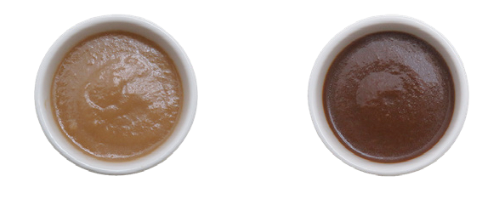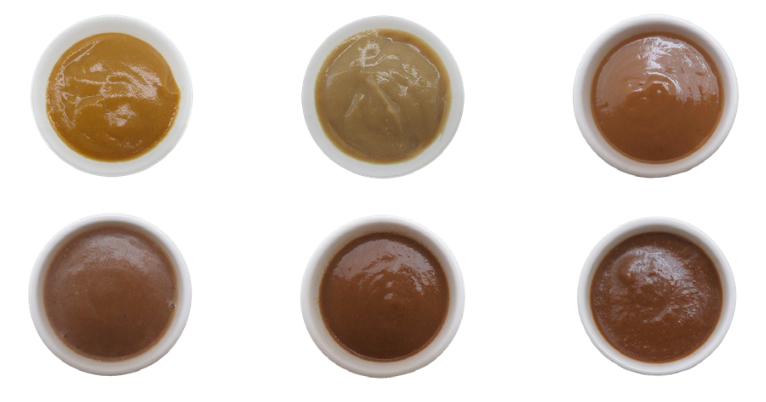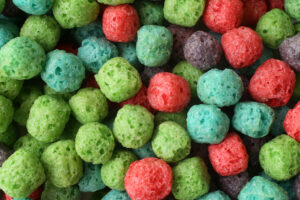Savoury foods seem to be intrinsically linked with the colour brown. Think of any savoury dish, and chances are that it has warm tans, golden hues or deep brown shades. And there is reason for that! In this article we’ll explore this association and the available browns for savoury applications.
Brown: Delicious and Complex
Brown is a composite colour, rather than a spectral colour, so it is complex by definition. If we were to create it through a blend, we would need three primary colours. Just as an example of how hard it is to define, the Japanese language doesn’t have a specific word for it. Rather, they use descriptive names like “tea-colour” or “fallen-leaf.”
Brown Options for Savory
But browns are indeed ubiquitous in nature. They are found in all sorts of living creatures, mainly in the form of melanoid pigments. These are large molecules that absorb light strongly along most of the visible spectrum, that’s why they appear so dark and… ehm… brown!
And melanoid pigments are precisely the type of pigments that occur when we cook our savoury foods. A combination of Maillard and caramelization reactions is responsible not only for the attractive colour but for the more complex umami, and kokumi flavours in cooked and roasted foods.
We already know that visual imprinting predisposes our minds for flavour intensity and identity. Brown colours contribute to a complete and comprehensive sensory experience that enhances complex savoury flavors.
When faced with the challenge to choose the right brown to visually design your savoury food, you have plenty of options with a range of stability and shades to suit your particular need.
Caramel Color
Caramel colours are great and economical candidates. They can be chosen based on pH, colloidal charge, and processing requirements (powders or liquids, etc).
Among them, caramel colour class I is widely favored by consumers because of its perceived naturalness and minimal processing. Traditionally associated with golden shades, innovations in its manufacturing have led to novel versions like Caramel Flex, featuring reddish tones and higher intensity that make them suitable replacements for classes III and some IV caramels. Another popular option is Specialty Dark caramels that allow for dose reductions when compared to the traditional Class I options, and are available as both liquid and powder forms.
Rich & Recognizable
Naturbrown® Ingredients
But if the goal is to provide consumers with labels that remind them of everyday pantry ingredients, you can explore the Naturbrown® line, which consists of caramelized juices of selected fruits and vegetables providing whole complex ingredients with rich brown colours that hint at the perfect umami/savoury flavor.
Within the Naturbrown® line of ingredients, you can also consider barley malt extracts, that are quite label-friendly, and provide a deep brown rich colour. The limitation lies in allergen labeling because this ingredient contains gluten so it may not be an appropriate option for your formulation needs.

Burnt Sugars
For the EU market, another alternative is burnt sugars. These options provide an optimal balance of complex flavor and incidental colours raging from light tan to medium brown, including rich golden hues, with a single ingredient and an attractive simple label for consumers.

These solutions provide a broad palette of brown shades that have been tested and proven in challenging applications like those with high sodium content.
The outstanding stability and versatility of our line of simple-label browns will elevate the enjoyment experience of your savoury snacks, dishes, and sauces. Have questions? Contact us for support from our colour scientists and dare to experiment the rich and deep options of our simple-label browns. Ready to get started with one of the brown options mentioned above? Request a sample here.








